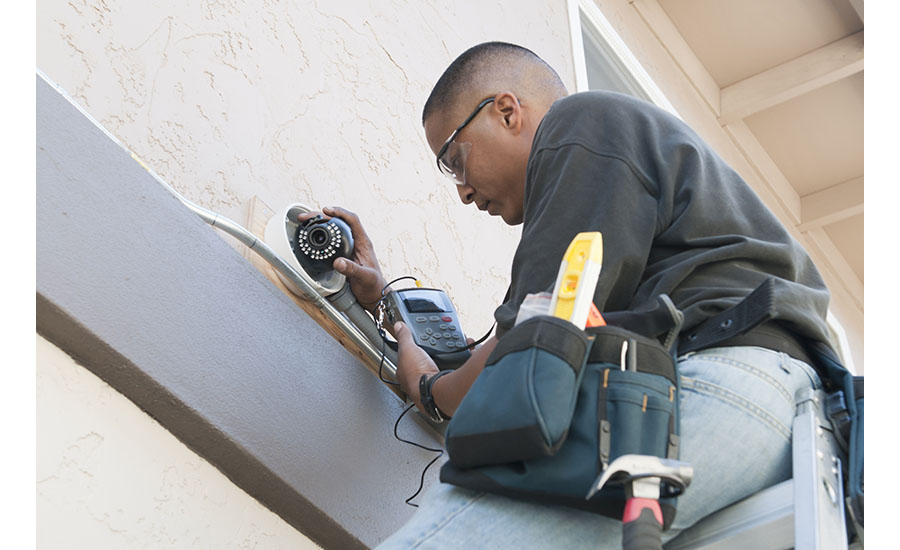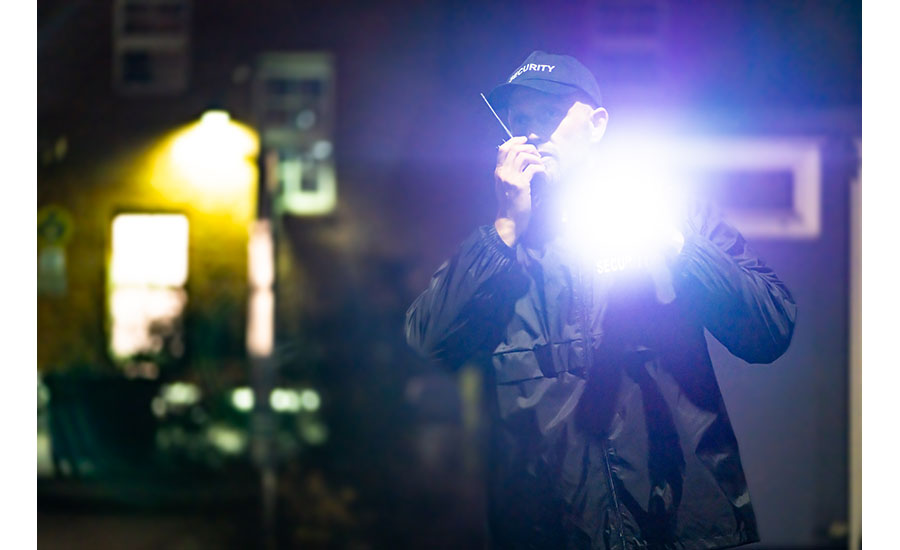Video verification has been practiced by central stations and other security specialists for decades, but the widespread adoption of this technology has seen significant growth in recent years. The integration of video surveillance with alarm monitoring systems has been an evolving process, shaped by advancements in technology and an increased focus on improving the accuracy of alarm verification.
In earlier years, traditional alarm systems primarily relied on sensors like motion detectors and door/window contacts to trigger alerts. While these systems were effective in detecting potential security threats, they often lacked visual confirmation, leading to instances of false alarms.
The concept of video verification emerged to address this limitation. By incorporating video surveillance cameras into alarm systems, monitoring centers gained the ability to visually verify alarm events in real time. This visual confirmation allowed operators to assess the situation more accurately, reducing false alarms and enhancing the overall reliability of alarm response.
Video verification not only improves the accuracy of alarm response but also provides a valuable visual record of incidents, greatly enhances situational awareness while aiding in investigations and post-event analysis.
Rising Demand & Opportunity
Over the past year, Morgan Hertel, vice president, technology innovation, Rapid Response Monitoring, Syracuse, NY, says the company has seen an increasing need for video verification services in both residential and commercial settings.
“Each has its own special nuances, but we are seeing increase across the board with high-end residential to a lot of outdoor protection on the commercial side,” Hertel says. “Overall, for us it has equaled about a 300 percent increase over last year.”
The lines between a traditional intrusion system and a video system are becoming ever more blurred, Hertel explains, as customers are now considering both systems combined to be a holistic security system.
“It’s no longer just one or the other. Just look at the huge increase in doorbell and outside cameras from the major players; there are literally millions and millions of them deployed,” Hertel explains. “Now is a great time to have our industry start to blend the two into very cohesive packages in order to get the job done.”
The widespread availability and affordability of digital video technology, along with advancements in communication infrastructure, has contributed to the growth in video verification practices. As IP-based cameras became more prevalent and networking capabilities improved, the integration of video verification with monitoring systems became more seamless.
For example, Speco Technologies of Amityville, NY, is using video verification in its Speco Cloud solution and hardware with advanced analytics, such as license plate recognition, facial recognition and vehicle detection.
“Being able to capture real-time footage of a monitored area remotely has made it easier for our dealers to diagnose an issue and take the appropriate steps to resolve the situation,” says T.J. Dickson, vice president of marketing, Speco. “This verification also extends to access control for events liked propped open doors and IP audio solutions that monitor changes in sound levels indicating an escalating event.”
Not only does video verification enhance security for end customers, but these services also help security dealers differentiate their offerings in a competitive market, positioning themselves as providers of comprehensive and advanced security solutions. And for those dealers who have not yet added video verification to their portfolios, Chris Brown, CEO of Tampa, FL-based Immix, suggests, “You are already behind the eight ball.”
Brown adds, however, it’s never too late to begin as these services are very easy to add whether you use a third-party monitoring center or operate your own.
“The up-front investment is minimal in most cases and pricing tends to be quite reasonable for simple video verification services, both from a monitoring provider as well as downstream to the end user,” he explains. “These services have really become standard for the industry, as opposed to an outlier as they may have been a decade ago.”
COPS Monitoring, Williamstown, NJ, believes in the possibilities with video so much it created a brand called AlarmWatch Video Services, which is supported by a team of dedicated video dispatchers and support staff. Alarm dealers are uniquely positioned to capitalize on RMR from new and existing video systems, explains COPS Monitoring President Jim McMullen.
“It’s not uncommon for alarm companies to outsource video systems. However, the benefit to alarm dealers is that AI-generated video alerts are treated as alarms,” McMullen says. “This could also mean that only alarm contractors can benefit from RMR in states that require licensing, as they are the only ones who can write monitoring contracts for professionally monitored video.”
The Monitoring Association, along with other stakeholders, created the TMA-AVS-01 standard to address the need for a unified framework in alarm monitoring practices. By establishing a standardized scoring system, the aim is to enhance the effectiveness and efficiency of response procedures for alarm events.
This collaborative effort seeks to provide dispatchers and law enforcement with clear guidelines for prioritizing responses based on the severity and validity of alarms, ultimately improving public safety outcomes. By implementing a standardized scoring system, the standard aims to provide a more accurate assessment of alarm events, distinguishing between genuine emergencies and false alarms.
“Everyone knows that false alarms are an issue,” says Jim McMullen of COPS Monitoring. “We simply can’t continue building our industry on the backs of law enforcement to determine whether alarms are real. Video is an important tool in reducing false dispatches and providing situational awareness, so much so that several industry associations worked with law enforcement and other industry stakeholders to create the TMA-AVS-01 standard.”
McMullen notes that AVS-01 can be a double-edged sword since it rewards alarms having more information, such as a human-verified emergency, audio or video with priority response. It does this because the additional information not only helps law enforcement prioritize resources to what could be real events, but also reduces the time law enforcement wastes on false alarms.
The other side of that is that response to a regular, traditional alarm — pretty much all alarm systems today without extra information — could ultimately suffer, he says
“Dealers should educate themselves on the emerging standard and understand how it will improve the priority of signals with additional information, such as video, and potentially negatively impact the response to existing traditional alarm systems,” McMullen says.
Now that several large monitoring centers are scoring alarms with AVS-01, those security dealers using new technologies to build more effective alarm systems that aid first responders in managing alarm traffic will have a distinct advantage in the marketplace, says Morgan Hertel of Rapid Response Monitoring.
“Today, video, audio and other similar technologies are easy and relatively inexpensive to deploy, so there has never been a better time to implement these methods,” he says.
In a nutshell, AVS-01 is an alarm validation scoring standard that will allow an approved monitoring center to be able to give each dispatch a score from 0 to 4. Because the standard is performance based, there are no limitations on technology, Hertel explains
High false alarm rates will never improve so long as traditional alarms continue to be used as the trigger to events. Leveraging video feeds along with adopting AVS-01 is considered a game-changer for the industry and its stakeholders.
“What has changed is the subsequent workflow and information we can use to make some decisions and potentially reduce the number of calls for service or enhance the call for service with additional information about the crime,” Hertel says.
As an example, in a typical residential setting with alarm verification video, most monitoring centers are going to use the video to help understand the situation and aid the customer and the responders — not just log it even if there is nothing seen on the video.
This provides the monitoring center — and the customer — with valuable data that helps with placing phone calls in the best order and making better response decisions. For example, Hertel explains, the monitoring center could see what appears to be burglars forcing a window or door and taking things.
“Something obvious like that would likely get dispatched as an AVS-01 Level III event before verification calls occurred, and law enforcement would be given those details,” he says. “However, if the monitoring center see on the video that there is someone that looks like they just walked in — but there isn’t any kind of aberrant behavior — it would make sense to have the customer weigh in on whether that person is supposed to be there or not.”
Technical Aspects to Consider
When deploying video systems for enhanced video verification services, sources tell SDM that security dealers must be aware of various technical considerations. High-resolution cameras with optimal frame rates play a pivotal role in capturing detailed footage, while advanced low-light performance ensures visibility in challenging conditions. The integration of video analytics becomes imperative for automated event verification, reducing false alarms and increasing the system’s efficiency.
Network bandwidth, storage capacity and cybersecurity measures are critical technical aspects that demand meticulous attention to ensure seamless data transmission, efficient storage and safeguarding against unauthorized access.
Scalability, remote access capabilities and ongoing maintenance strategies further underscore the technical factors that security dealers must navigate to deliver robust and reliable video verification solutions tailored to their clients evolving security needs.

Hertel emphasizes there are indeed a lot of considerations for dealers to think about along the way to delivering successful video verification deployments. Here are some of the more important ones he suggests dealers consider:
- Not every video system is suitable to use for video verification, so choose wisely. If you have never used it for this purpose, test it before you take it out and try to install it.
- Figure out the connectivity part ahead of time. Some platforms are pretty plug and play and others are not. You don’t want to be out trying to finish the job and realize you need to put in a bunch of firewall rules and port forwards in the 11th hour.
- Understand the goals. This is not CSI where you can look in a reflection on a shiny piece of metal and read a license plate from 3,000 meters away. Put cameras in a field of view that covers the entire protected area. Try not to have the neighbor’s home or property in the view, because a monitoring specialist won’t be able to know where property lines stop and start. Only use solid and proven video analytics for video monitoring.
- Make sure the platform you are going to use has a good way to engage the customer in the process. Most of your video will have people in it, and the fastest and easiest way to understand if they are authorized to be there will be for the building owner to tell you.
- Set and define the expectations with the building owner and make sure your monitoring center can meet those expectations.
“My best advice is to go slow with your immersion,” Hertel says. “Speak with your monitoring center to understand what your options are and get some recommendations. Take those recommendations and then do one system, your home or business or both, first. Get all of the issues worked out, document your work, and work with your monitoring center to help evaluate the system installation so it’s working as expected.”
Once you have selected the hardware and platform, select one vertical and go sell a solution and see how it goes, he adds. Make any necessary adjustments and then go pick another one to sell and install.
“The worst thing you can do is to go bid a 150-camera car lot or construction site or something big like that as your first step,” Hertel cautions. “Take the crawl-walk-run model and you will do just fine.”
Still another key factor for dealers to master: Figure out the economics.
“It’s not the same as reselling basic alarm monitoring,” Hertel says. “There are a lot of nuances, costs and rules, so make sure you understand the differences between video verification and video monitoring and what the rules and charges are from your monitoring center that you use.”
One of the biggest reasons why it’s much easier for dealers to become involved in video verification services nowadays are advancements in technology, Dickson says.
“Whether it’s through mobile apps, cloud-based solutions or plug-and-play devices, the rapid advancements have led to the development of more user-friendly and integrated video verification solutions,” he adds.
In Brown’s view, artificial intelligence (AI) has had the most impact on the video verification market. Whether it’s being deployed at the edge as a detection solution or at the back end for analysis and verification of an event, AI is shaping the way monitoring centers — particularly those with a heavy emphasis on video monitoring — operate, he explains.
“Additionally, I would say that different communication and investigation modules that some software automation providers now offer have proven very beneficial in that ‘last mile’ communication between the center and responders,” he continues. “Being able to send real-time video and notes to a responder as proof of verification — or to be able to positively identify a suspect through face-matching technology with a couple of mouse clicks and relay that information in real time — brings added value from a monitoring services perspective and fosters better relationships between responders and customer stakeholders.”
Dramatically reducing false and nuisance alarms, while accurately detecting real threats, has led to an increase in the use of AI technology by monitoring centers, Brown explains. This impacts labor costs in a positive way, he continues, leading to cost efficiencies and allowing monitoring centers to better allocate resources to more core competencies. It also paves the way for novel end-user applications that were once challenging to match with suitable monitoring solutions due to resource limitations or technical constraints, or both.
“It opens doors for traditional security monitoring centers to offer more business-related services and deliver back to the client data that you can’t capture or would be too expensive to capture with a human,” Brown says. “The camera is ever-present and can be leveraged during non-security hours.”
Deployment & Integration Factors
When deploying and integrating video verification systems with an end customer’s existing security infrastructure, security dealers may encounter several challenges. One common obstacle is compatibility issues between the new video verification components and the customer’s legacy security systems. This can result in technical complexities and require additional customization or integration efforts to ensure seamless operation.
Moreover, varying network configurations and protocols may pose challenges in establishing robust communication between different components of the security system. Limited bandwidth or storage capacity in the customer’s network environment may also necessitate optimizations to accommodate the additional data generated by video verification systems.
Overcoming these challenges requires careful planning, thorough assessment of the customer’s infrastructure, and effective communication with both the customer and technology vendors to deliver a tailored and integrated solution.
“When deploying video systems for video verification, security dealers need to be aware of camera placement and coverage, frame rate, motion detection and analytics, and remote access,” Dickson says. “Camera placement is critical to cover entry points and vulnerable zones. High frame rate ensures smoother video playback and better picture quality.”
Dickson adds, remote access makes it easier for dealers and end users to gain control of their systems and access all footage for a specific time and place. “So, it’s important to work with hardware like Speco NR series recorders and IP cameras that are fully integrated, not just compatible, with video verification software such as Immix, to ensure a reliable connection every time.”
Typically, most solutions work quite easily and well with existing security systems, Brown says. Having the right software automation platform that can easily connect and communicate with various disparate technologies is critical for a central station or monitoring center.

“Most of the advanced AI and video analytic solutions on the market tend to be camera agnostic, so adding them to existing legacy systems allows for upselling and increased RMR with minimal investment,” Brown explains. “In some cases, the automation itself has AI technology embedded that a center can enable with no additional hardware or programming needed at all.”
Brown does emphasize there is always a need to consider each solution and its compatibility with both on-site hardware and back-end software systems.
“It’s important for dealers to clearly and thoroughly communicate proposed solutions to their monitoring provider or in-house team to confirm that the services being sold can be delivered by the center,” he says. “Compatible solutions are more prevalent than ever, so it’s usually not too difficult to find a solution that will meet both customer and monitoring center requirements.”
Hertel explains when it comes to video verification where you are taking a traditional alarm system, and then using video to enhance the dispatch when the alarm triggers, the first thing you need is to be able to trigger the video system to know when the alarm system actually goes into alarm.
“The video system needs to be able to grab the before and after video in a clip so that a monitoring center specialist can quickly look to see what triggered the alarm and then what happened afterwards,” he says. “Having just live feeds after the alarm is good for understanding the situation at that moment, but it does nothing to support that someone broke in, especially if they left when the siren or bell triggered.”
This timing of events and being able to trigger the right camera(s) based on the zone(s) that tripped on the alarm system is crucial, he adds.
“Without that working, video verification will not work correctly, and you will miss real events,” Hertel says.




